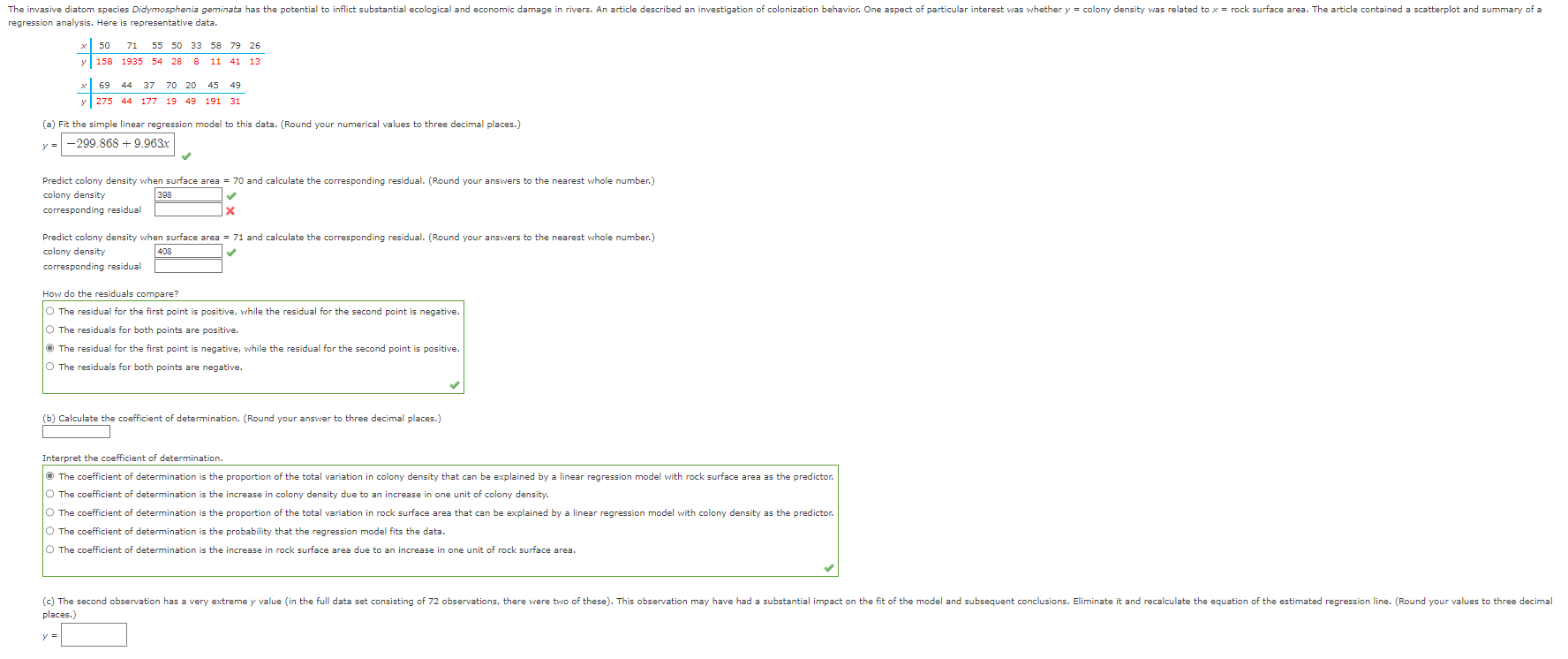Home /
Expert Answers /
Statistics and Probability /
begin-tabular-c-cccccccc-x-50-71-55-50-33-58-79-26-hline-y-158-pa220
(Solved): \begin{tabular}{c|cccccccc} \( x \) & 50 & 71 & 55 & 50 & 33 & 58 & 79 & 26 \\ \hline\( y \) & 158 ...
\begin{tabular}{c|cccccccc} \( x \) & 50 & 71 & 55 & 50 & 33 & 58 & 79 & 26 \\ \hline\( y \) & 158 & 1935 & 54 & 28 & 8 & 11 & 41 & 13 \\ \( x \) & 69 & 44 & 37 & 70 & 20 & 45 & 49 & \\ \cline { 1 - 8 }\( y \) & 275 & 44 & 177 & 19 & 49 & 191 & 31 & \end{tabular} (a) Fit the simple linear regression model to this data. (Round your numerical values to three decimal places.) \[ y=-299.868+9.963 x \] Predict colony density when surface area \( =70 \) and calculate the corresponding residual. (Round your answers to the nearest whole number.) colony density corresponding residual Predict colony density when surface area \( =71 \) and calculate the corresponding residual. (Round your answers to the nearest whole number.) colony density corresponding residual How do the residuals compare? The residual for the first point is positive, while the residual for the second point is negative. The residuals for both points are positive. The residual for the first point is negative, while the residual for the second point is positive. The residuals for both points are negative. (h) ralrulsto the coefficient of determination. (Round your answer to three decimal places.) Interpret the coefficient of determination. The coefficient of determination is the increase in colony density due to an increase in one unit of colony density. he coefficient of determination is the probability that the regression model fits the data. he coefficient of determination is the increase in rock surface area due to an increase in one unit of rock surface area.
Expert Answer
We have a dependent variable, colony density (y), and the independent variable rock surface area (x). We want to build a regression model that predict
